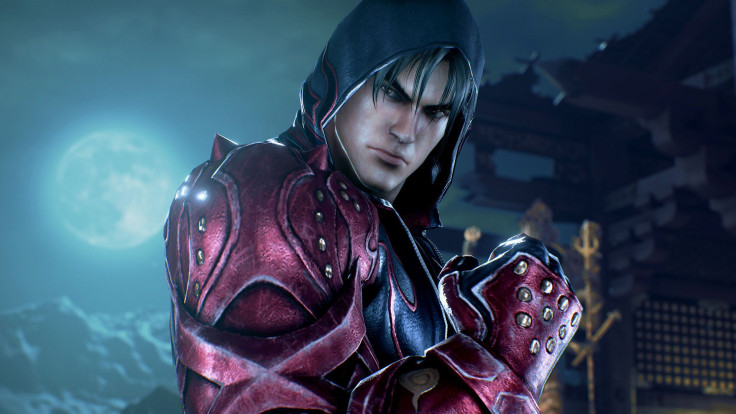I don’t know exactly when Tekken became the fighting game series I couldn’t quit. I’ve been a fan since Tekken 2 and bought that aggressively average GBA port of Tekken 3. But Tekken didn’t become a staple of my gaming diet until my first stint at GameStop. One of the store’s keyholders was a classmate and we were obsessed with Tekken 5 . We swapped strategies during lectures and finished hundreds of matches on the clock. One of my closest friends even has the Hori fight stick I got with the Ultimate Collector’s Edition of T5. It’s a franchise very near and dear to me. So you can imagine how relieved I am to tell you Tekken 7 is an excellent fighting game.
Tekken 7 has been pitched as a culmination of the Mishima saga, an exclamation point on the decades-long war between Heihachi, founder of the Mishima Zaibatsu, his son, Kazuya, shadow boss of G Corporation, and Kazuya’s now-missing son, Jin. And it is (to some degree). But the game also acts as a sort of series anthology. All the cutscenes and endings from previous games are unlockable in Tekken 7, making it easy for new fans to get familiar with the story and for longtime fans to refresh their memory. Tekken 7 also features some of the most responsive controls we’ve seen since making the transition to wireless controllers. Dedicated players will probably still prefer a wired connection. But casuals shouldn’t feel robbed by input delay.
On a basic level, Tekken hasn’t changed much. Combat is still built around four attack buttons, two punches and two kicks, but the move lists for each fighter are longer than those seen in previous games. Tekken 7 also introduces two new concepts, Rage Arts and Rage Drives, which expand the Rage system implemented in Tekken 6 . Rage still triggers when a fighter’s health is low, usually around 10 percent, and boosts the damage of all attacks. But players can now choose to trigger a short (Arts) or long (Drives) combo that consumes their Rage while doling out significant damage to their opponent. It’s a great system for keeping the action close and forces the player to pay close attention during the final moments of the match.
Presentation is better than it’s ever been. Unreal Engine 4 gave Bandai Namco the tools needed to deliver the best-looking game in the series. Move animations snap in way that makes each technique look crisp and precise. Other changes, like the slow-motion camera that highlights close finishes, also put Tekken 7 a step ahead of its competition when it comes to match presentation. Injustice 2 still claims the crown for character modeling, thanks to truly incredible face animations, but this is unquestionably the best that Tekken has ever looked. The base game even includes the NJPW/Bullet Club DLC announced earlier this year. And the roster is an excellent mix of King of Iron Fist newcomers and seasoned veterans of the tournament.
That said, the game has issues. Story mode is easily the biggest disappointment. Bandai Namco uses a combination of cutscenes and still art to provide the most extensive storytelling we’ve seen from the series. They even rope in Akuma, a recurring antagonist from the Street Fighter series, to give a little more depth to the Mishima family’s story. But there’s not enough consistency from the Story mode encounters. Most fights are too easy, pitting the current character (usually Heihachi) against a wave of Jack-6s or Tekken Force soldiers barely capable of stringing two attacks together. And the ones that aren’t too easy leave you ready to pull out hair. The final encounter is particularly egregious. And the Character Episodes, supplemental content for fighters not included in the core story, aren’t much more than one-off Arcade matches. It might seem silly to nitpick the story mode of a series about a father and son who can’t stop throwing each other into volcanoes. But it’s a big slice of the experience for players who don’t enjoy online multiplayer.
Customization options are also a bit light in Tekken 7. Too many items have been created to fit the entire roster instead of offering unique changes to specific characters. There are also weird issues with item compatibility, like not being able to choose both a unique hairstyle and a hat for your favorite fighters. It’s obviously not a major part of the game and our gripes about customization didn’t have much impact on our score. But personalization is the key selling point for one mode, Treasure Battle, and the only significant reward system left once after unlocking all the narrative content in Tekken 7. So writing it off as entirely unimportant doesn’t seem fair either.
Tekken 7 isn’t a perfect game. It’s not even the best fighting game to debut this summer, thanks to Injustice 2, but it’s an excellent finale for this leg of the franchise’s history. We’re not sure if Tekken will be back anytime soon or what a theoretical Tekken 8 roster will look like. But there’s still room for the series to grow, particularly when it comes to storytelling, and we’re certainly curious to see what a Tekken game that didn’t prioritize the Mishima clan might look like. And it’s kind of hard to imagine Bandai Namco just abandoning one of its most recognizable properties. But if this turns out to be the last Tekken, it’s great to see the franchise go out on its shield.
Tekken 7 is now available for PlayStation 4, Xbox One and PC.
Be sure to check back with iDigitalTimes and follow Scott on Twitter for more Tekken 7 news in 2017 and however long Bandai Namco supports Tekken 7 after launch.


















